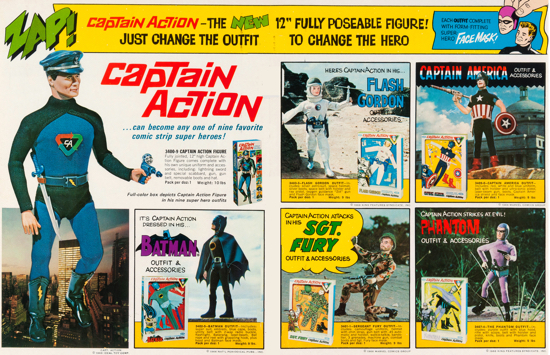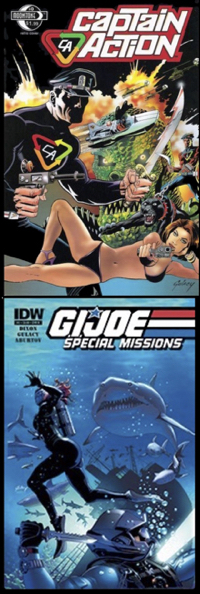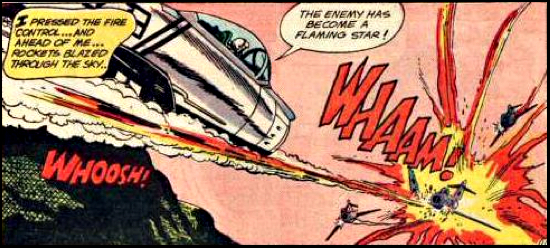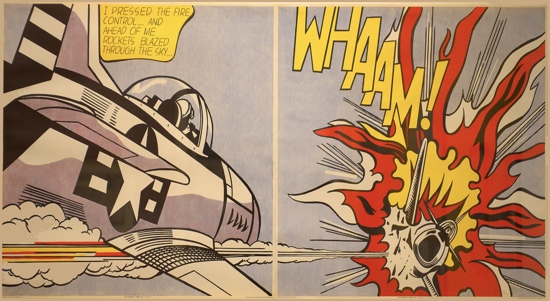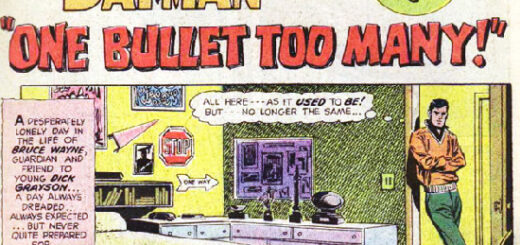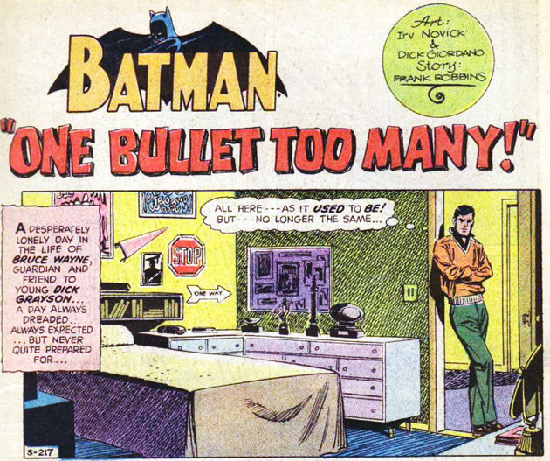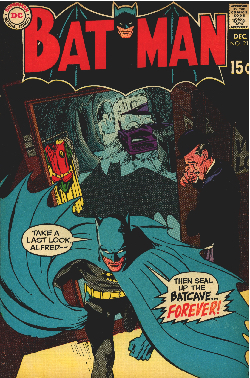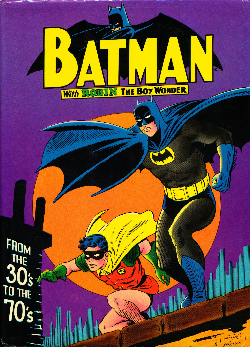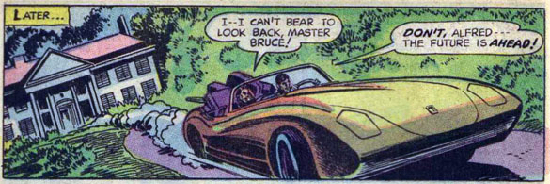Ed Catto: Play Nice in the Toybox
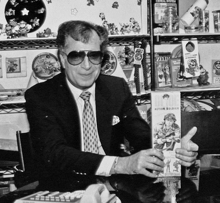 He never made a comic. He never created a TV show. He never even went to a comic convention. But his impact on Geek Media was profound.
He never made a comic. He never created a TV show. He never even went to a comic convention. But his impact on Geek Media was profound.
Without him, toy store aisles would be very different. Without him, comic shops would be very different. Without him, licensing deals would not be where they are today. And if he didn’t do what he did, millions of children would have had very different childhoods.
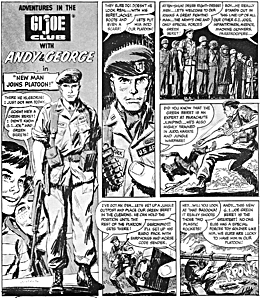 Last week, the news broke that the creator of Captain Action and GI Joe, Stan Weston, had died.
Last week, the news broke that the creator of Captain Action and GI Joe, Stan Weston, had died.
Creating GI Joe – and creating a category
Stan’s biggest idea was to create what would become the action figure category. He had this idea to transform the 12” Barbie Fashion Dolls into a something for boys. Just as the 1960s Barbie could transform, via a simple costume change, from a fashion model to a teacher to a nurse, he envisioned a soldier who could shift from an infantry man to a Navy diver to a fighter pilot.
At that time, the idea to create a Barbie Doll for boys was a radical one. Boys might play with soldiers, but never dolls. In the sixties, I remember my grandfather, who’s approval meant the world to me, get confused about his grandsons playing with dolls. We tried to explain how off-base he was, but someone from his generation just couldn’t wrap his head around it.
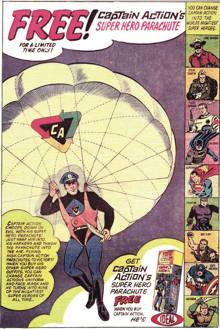 It was a big deal. And with a series of comic book ads drawn by Irv Novick, GI Joe became the next big thing for a generation of young boys
It was a big deal. And with a series of comic book ads drawn by Irv Novick, GI Joe became the next big thing for a generation of young boys
Captain Action
Captain Action was Stan’s “next idea” after GI Joe. While GI Joe could change from a soldier into a frogman, or an astronaut, Captain Action could change into different superheroes. And the amazing thing was, Captain Action could change into different heroes who were owned by different corporations. He could change into Marvel Comics heroes like Captain America or Sgt. Fury. He could change into King Features heroes like The Phantom or Flash Gordon. He could even change into the NPP characters, owned today by Warner Bros’ DC Comics.
He explained to me that it was “easy.” They’d just hop into NYC cabs, have a meeting, ask the secretary to type up the contract and a carbon copy and they’d be all set to go.
It was simple idea that wasn’t capitalized upon before this. Kids would mix-and-match the toys in their toy box for creative play. Why couldn’t they mix-and-match the toys in one particular toy line too?
Contrasting those Mad Men days with the complexity of finalizing deals now makes today’s licensing executives want to cry. No lawyers. No emails. No conference calls. No style guides. Just a firm handshake, a focus and a little personal integrity.
Stan Weston wasn’t a one-trick pony. He did a lot of other things that become the favorite things of a lot of people. He was involved in ventures that included everything from Nintendo to Thundercats to Farrah Fawcett.
Passing the Torch
When my business partner, Joe Ahearn, and I acquired the Captain Action property, I had the opportunity to speak with Stan. He was everything you’d want him to be. He was gracious, and confident and so very encouraging. His whole attitude towards our acquisition of Captain Action was, “Wonderful! You boys have fun with that! Make some money and have some fun!”
I had an idea that Stan should be a guest of honor at New York Comic Con. I think it would have been fantastic for fans and especially for Stan. Sadly, at that point, he was living in France and was reluctant to add more travel to his schedule. In retrospect, perhaps I should have pushed harder.
But like so many of the iconic comic creators, or a guy like Chuck Berry, Stan would not reap the financial rewards of his category-creating ideas. He’d take a run at re-negotiating/re-litigating with Hasbro, the company that grew out of the little toy company started by the Hassenfeld Brothers. Hasbro had grown into the behemoth it is today based upon, in no small part, the success of Stan’s ideas. But those agreements aren’t public knowledge and it’s unclear where it all ended up.
Weston, and his heirs will have to just take pride in the worldwide industry established, innumerable jobs created and countless hours of fun resulting from a few great Stan Weston ideas.


